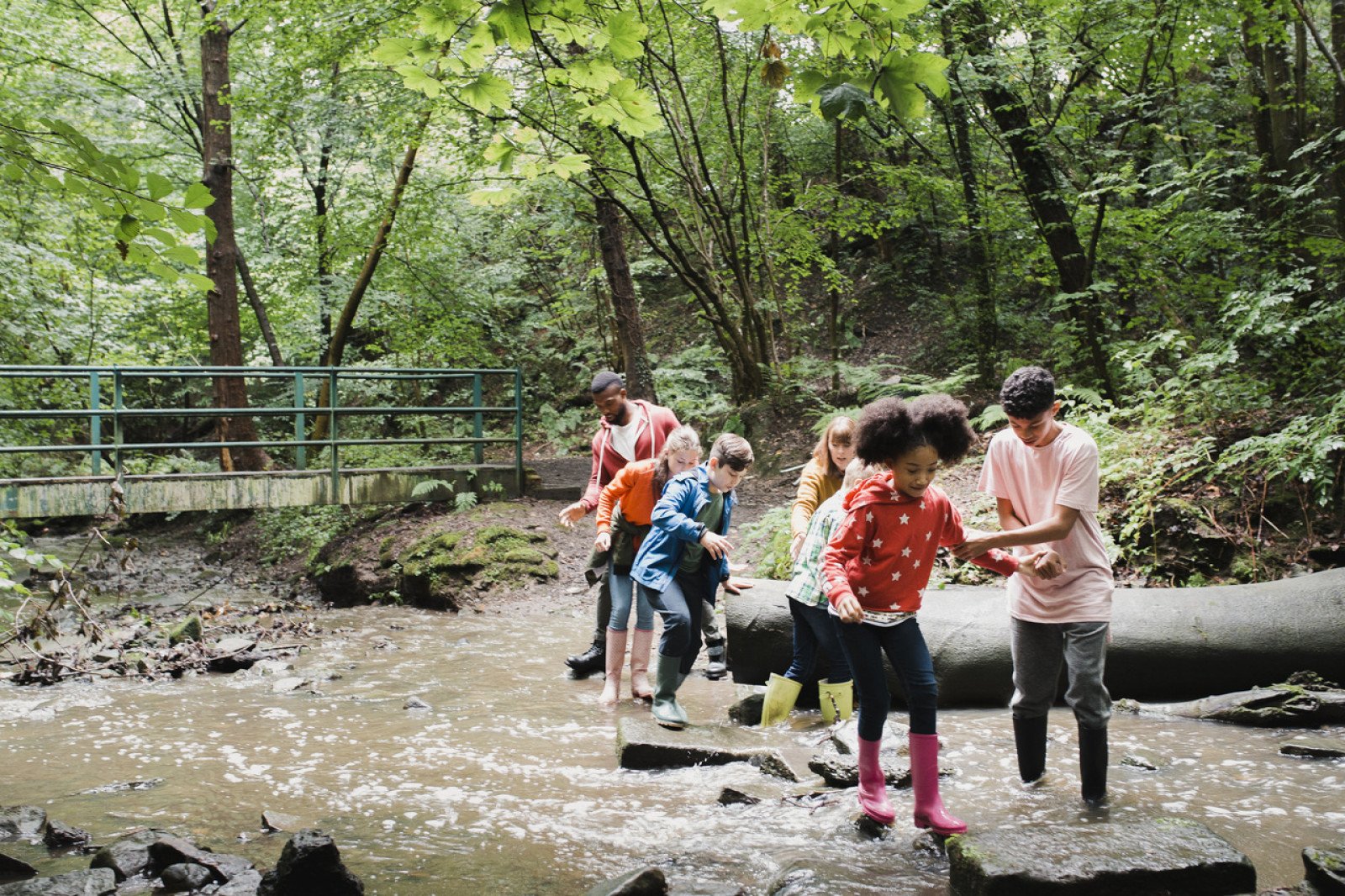Outdoor weather walk
Get outside, look around to observe, hear, smell and touch your surroundings.

Overview
Get outside with your class and explore the seasonal changes that affect the world around us. Students will learn what people wear, how they behave and how they use energy.
Instructions
What you'll need
- Neighbourhood area around the school
- Scrap paper for drawing pictures and craft supplies like crayons and glue
Weather walk
- Gather the students in a group, and identify the current season. Have the students share what they know about the season. Depending on your season discuss things like:
- In winter, there is cold weather, bare deciduous trees, frost, snow, hot chocolate, warm coats, hats, gloves and shorter days.
- In spring, there is warmer weather, flowers appearing, leaves unfurling and blossom on trees, sunshine and spring rain showers.
- In summer, there is sunshine, shorts, sunscreen and sunhats, lots of flowers and trees, longer days, and getting outside.
- In fall, there are falling leaves, wind, rain, people with umbrellas, pumpkins and Halloween.
- Power down your classroom, dress appropriately for the season and take the students outside for a walk around the neighbourhood. Plan for about a 20-minute walk.
- Before setting off, ask the students to pair up and observe the clothing that people are wearing. After a few minutes, stop the group and ask them to share some of their observations. Is the clothing appropriate for the season?
- Walk again and have the students look for signs of the season in nature like leaves changing colour, falling, no leaves on trees, blossoms or buds. Stop the group at a tree and ask them to share what they notice. Have the students touch the tree; is it cold, warm or wet? Smell the tree. Does it remind them of the season?
- Continue the walk for a few minutes and then form a circle and have everyone stand still and quiet. Have students close their eyes to listen for sounds of the season like wind blowing leaves, rain, silence of snow or birds singing.
- Walking on, ask students to notice something that reminds them of the season and to remember it as they walk back to the school. If possible, let students collect something from the walk to remind them of the season, such as a leaf or twig.
- Back in the classroom, have students draw a picture of what reminds them of the season. If an item was collected, this could be incorporated into the picture. Discuss what to wear in the season, indoors and out. Dressing right keeps us warm, dry, or cool.
Modify or extend this activity
- Have a class discussion on what they wore outside and if they were comfortable. Ask them to observe what they are wearing indoors now.
Curriculum Fit
Kindergarten Science
Content
- Seasonal changes
Curricular competencies
Questioning and predicting
- Demonstrate curiosity and a sense of wonder about the world
Planning and conducting
- Make exploratory observations using their senses
Processing and analyzing data and information
- Experience and interpret the local environment
- Discuss observations
Communicating
- Share observations and ideas orally
Kindergarten Art Education
Big idea
- Engagement in the arts creates opportunities for inquiry through purposeful play
Curricular competencies
Exploring and creating
- Create artistic works collaboratively and as an individual, using ideas inspired by imagination, inquiry, experimentation, and purposeful play
Assessments
- Assess students’ ability to use their senses to see, hear, feel and smell the season around them.
- Assess students’ ability to make and share observations.
- Assess students’ understanding of differences in the seasons.
Teaching Notes
Seasons and energy
Seasonal changes affect nature and the world around us. It also affects what people wear, how they behave and how they use energy. By learning to observe and respond to seasonal changes, we can be comfortable without using a lot of heat and cooling. We can choose clothing suitable for indoors and outdoors, open or close the windows and turn down the air-conditioning or heat.
Simple tips for keeping warm and saving energy indoors in winter:
- Dress for winter: put on a sweater, warm socks, long pants or cuddle under a blanket.
- Move around.
- Close the windows and blinds or curtains to trap the warm air inside on the north side (no sun).
- Let the sun shine through your windows on the south side to warm up the room.
- Turn down your heat when you leave the house.
- Get a programmable thermostat and set it to a cooler temperature at night.
- Put a rug on the floor if it feels cold.
- Use weather stripping and window film to keep the drafts out. See the "Winning by not losing (heat)" video.
Simple tips for staying cool and saving energy indoors in summer:
- Dress for summer: cool clothing preferably made out of natural fibres like cotton; shorts and t-shirts.
- Open windows to get a breeze through the home.
- Close blinds on the east side in morning, and west in the afternoon.
- Wet a towel and put on your feet at night.
- Drink lots of water to hydrate, it will keep you cooler.
- Apply a cool cloth to your wrists, neck, elbows, ankles and behind your knees.







